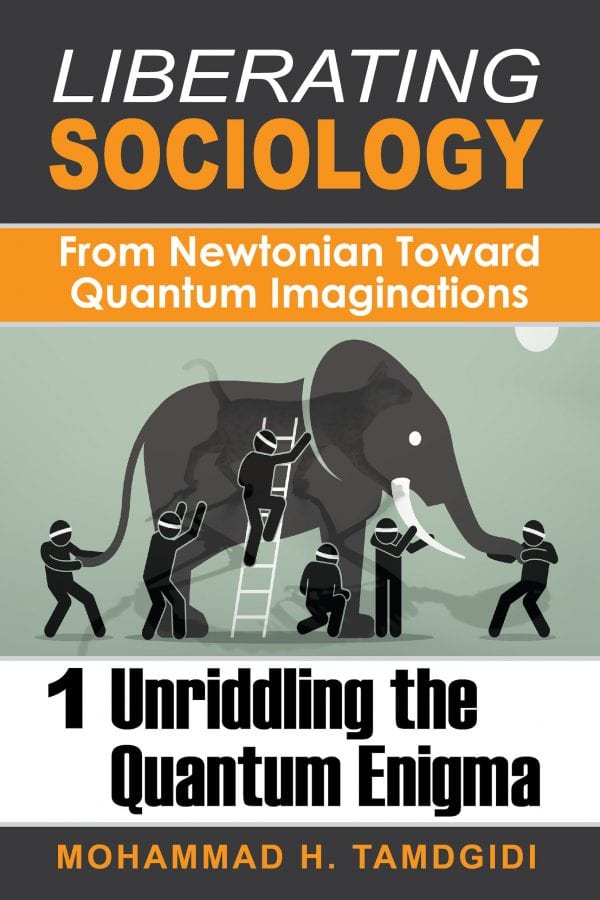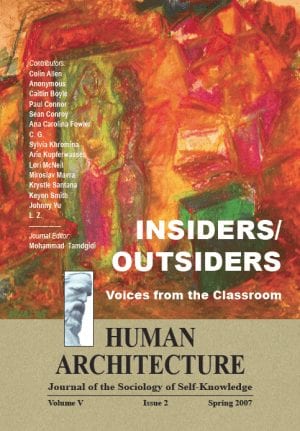Book Section: CHAPTER 5 — Approaching the Elephant in the Room: The Many Interpretations of the Quantum Enigma — by Mohammad H. Tamdgidi
$20.00
This is the fifth chapter of the first volume of the series, Liberating Sociology: From Newtonian to Quantum Imaginations, subtitled Unriddling the Quantum Enigma, by Mohammad H. Tamdgidi. In this chapter titled “Approaching the Elephant in the Room: The Many Interpretations of the Quantum Enigma,” the author provides a conceptual map of several major representative interpretations offered to date for the quantum enigma.
Description
Abstract
This is the fifth chapter of the first volume of the series, Liberating Sociology: From Newtonian to Quantum Imaginations, subtitled Unriddling the Quantum Enigma, by Mohammad H. Tamdgidi. In this chapter titled “Approaching the Elephant in the Room: The Many Interpretations of the Quantum Enigma,” the author provides a conceptual map of several major representative interpretations offered to date for the quantum enigma.
Tamdgidi suggest that the basic questions of the quantum enigma come down to these: How can we observe a reality that is basically a result of our own observation of it? If the microscopic world (at least) is probabilistic and subject to our own observation, both of which defy what we have considered to mean ‘real,’ how can a real macroscopic world arise from what seems to be a microscopic foundation comprised of seemingly yet-unrealized probabilistic objects that change as a result of our observations of them? Tamdgidi identifies three basic trends among quantum interpreters over the question of what constitutes “measurement” or “observation” in the sense of whether consciousness is mediated through a physical process, and/or whether it has a reality that in a non-physical way influences measurement directly.
The first trend may be called the set of materialist interpretations, the second trend the set of idealist or mentalist interpretations, and the third trend is the set of nonreductive dialectical interpretations, ones that try to break out of the dualistic ways of interpretation they regard as being advanced by the other two trends. Tamdgidi also introduces a categorization of the interpretations in terms of their being (1) agnostic, (2) incomplete, (3) objectivist, and (4) subjectivist, arguing that this classification more or less overlaps with the prior classification as a variation of it.
The author then proceeds to overview various major interpretations of the quantum enigma offered to date, among which he surveys the Standard and Extreme Copenhagen Interpretations, the Incomplete Knowledge Interpretation, the Pilot-Wave Interpretation, the Many Worlds and Many Minds Interpretations, the Decoherence Interpretation, and the Consciousness Cause Interpretations, beside others (the Ithaca Interpretation, the Transactional Interpretation, and the Quantum Logic Interpretation).
In comparing and contrasting various existing quantum interpretations, Tamdgidi seeks an exercise not of the cruder, subjectless, billiard balls game variety that aims to juggle and choose one or another interpretation or expert being correct or not, but one in which they are freshly revisited as transparent, overlapping, and interpenetrating insights that altogether contribute to seeing as a whole the elephant in the room that the quantum enigma has become.
Recommended Citation
Tamdgidi, Mohammad H. 2020. “CHAPTER 5 — Approaching the Elephant in the Room: The Many Interpretations of the Quantum Enigma.” Pp. 225-268 in Liberating Sociology: From Newtonian Toward Quantum Imaginations: Volume 1: Unriddling the Quantum Enigma. (Human Architecture: Journal of the Sociology of Self-Knowledge: Vol. XIII, Issue 1, 2020.) Belmont, MA: Okcir Press (an imprint of Ahead Publishing House).
The various editions of the volume of which this chapter is a part can be ordered from the Okcir Store and all major online bookstores worldwide (such as Amazon, Barnes&Noble, and others).
Read the Above Publication Online
To read the above publication online, you need to be logged in as an OKCIR Library member with a valid access. In that case just click on the large PDF icon below to access the publication. Make sure you refresh your browser page after logging in.








